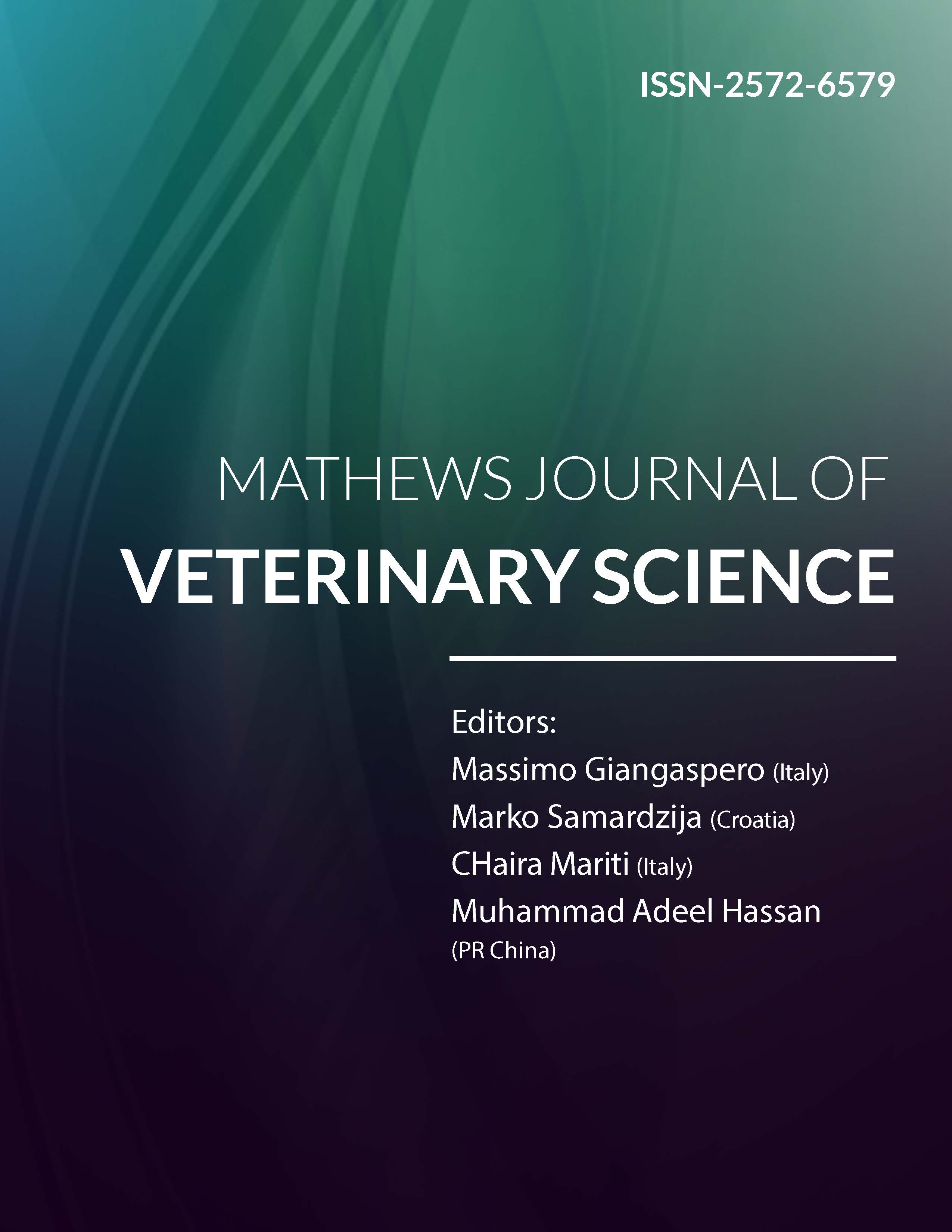
Information Links
Previous Issues Volume 8, Issue 4 - 2024
Prevalence of Tick Infestation in Cattle in and Around Jimma Town
Cholo Esayas*
*Corresponding author: Cholo Esayas, Ethiopia, Tel: 0924745560; E-mail: [email protected]
Received Date: July 29, 2024
Published Date: October 26, 2024
Citation: Esayas C. (2024). Prevalence of Tick Infestation in Cattle in and Around Jimma Town. Mathews J Vet Sci. 8(4):50.
Copyrights: Esayas C. © (2024).
ABSTRACT
A cross sectional study was conducted from November 2018 to April 2019 in and around Jimma town to determine the prevalence of tick infestation, to identify different types of tick species and their preferred site on cattle’s body and host related risk factors. A total of 384 cattle were randomly selected and examined for the presence of tick. Out of the total examined 300(78.1%) were infested by one or more tick species. Of the risk factors considered the prevalence of tick infestation was not significantly different (P>0.05) among different breeds of cattle and the kebele’s the animals were sampled. However, statistically significant variation infestation rate (P< 0.05) was observed in line with sex, age and body condition score of the animals. As a result, infestation rate in animals with poor body condition score (96.4%), male (78.9%) and old (95%) was found to be higher when compared with lower prevalence rates in each risk factor’s counterpart as good body condition score (37.6%), female (68.4%) and young (62.1%) respectively. About 2,125 adult ticks were collected from the total sample and identified to genera level as Amblyoma, Boophilus and Rhipicephalus and species level as Ambyloma cohaerens (38.02%), Ambyloma variegatum (35.01%), Boophilus decoloratus (21.32%), Rhipicephalus evertsi evertsi (2.96%) and Ambyloma gemma (2.68%). Among this Ambyloma cohaerens (38.02%) and Ambyloma gemma (2.68%) were highly and least abundant respectively. Highest and lowest male to female ratio of 2.45:1 and 0.535:1 for Amblyoma cohaerens and Boophilus decoloratus was identified by the study. The favorable predilection sites of the ticks were also detected by the study with Amblyomma species found dwelling at the brisket, udder/scrotum and groin/belly; Boophilus decolaratus at neck/dewlap, udder/scrotum, groin/belly, leg and ear and Rhipicephalus eversti evertsi at under tail and ano genital. As a conclusion, this study revealed high prevalence of tick infestation may be due to lack of community awareness about tick and tick borne disease and their control method which is expected to reveal the exiting gap in the study area to avoid the problem and may help to undergo further research work. Therefore, it is recommended to minimize the problem primarily by creating awareness about appropriate and strategic control measures of tick infestation.
Keywords: Cattle, Jimma town, Predlection site, Prevalence, Tick Species.